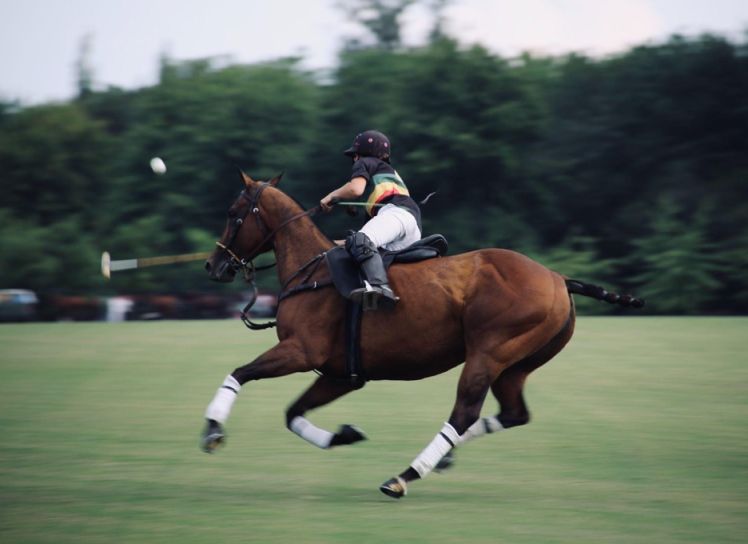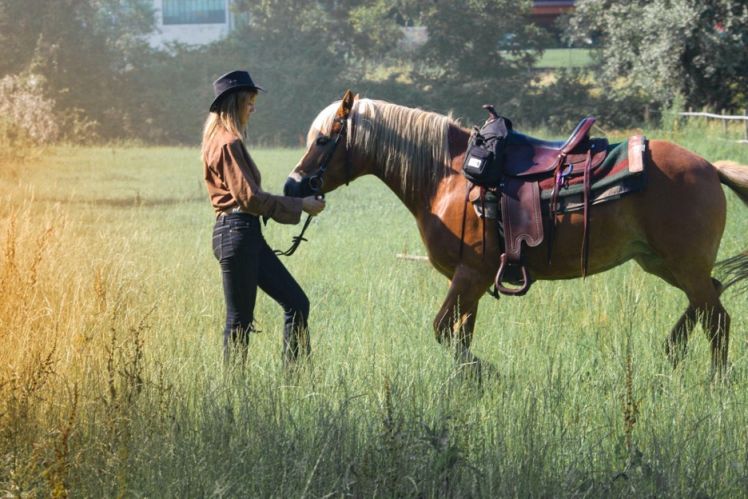In the equestrian world, there’s a magical moment when the barrier between horse and rider dissolves—an elusive instant when two hearts beat in rhythm, four legs move in unison, and a bond forged in trust and respect radiates warmth stronger than the afternoon sun.
Connect with a verified veterinarian in minutes. Licensed vets are available 24/7 to answer your questions. No need to worry about your furry family member.
This transcendent connection, this seamless partnership, is not the stuff of fairy tales but the product of understanding, communication, and dedication.
This article serves as a compass, navigating the winding paths to that pinnacle of equestrian connection—building a bond in the saddle that transforms horse and rider into harmonious partners.

Understanding Your Horse’s Behavior
Horses, like people, have their own language. A flick of the tail or a shift in posture can speak volumes about their feelings. To bond with your horse, it’s crucial to understand their behavioral cues. Observing their reactions during different situations can give you valuable insights into their personality and emotional state.
Pay attention to your horse’s reactions during grooming, feeding, and riding. Watch for signs of stress or contentment. These observations can guide your interactions, helping you adjust your approach to suit their comfort level, ultimately leading to a better bond.
Choosing and Using the Right Accessories
The right accessories, like a well-fitted saddle or the correct bridle, ensure comfort and safety for both of you. Imagine riding a long trail with an uncomfortable saddle! It would strain your relationship with your horse.
Adding a personal touch, like a customized saddle pad, can show your care and make your horse feel special. It’s a small way to say, “I care about you,” enhancing your bond. To make the pad more comfortable, consider one with impact gel. Check out The Horse and Stable for some options worth considering.

Review symptoms, medications & behavior to keep your pets healthy with a Vet Online in just minutes.
Ask a Vet Live NowCommunication Techniques
Communication is a two-way street. As much as you learn to interpret your horse’s signals, they learn to understand yours. Body language plays a crucial role here—how you sit in the saddle, your hand movements, and even the tension in your body. All these can send powerful signals to your equine partner.
A gentle pat or a comforting word can do wonders in establishing a connection. Use a consistent and calm tone when giving voice commands. Positive reinforcement, such as a pat or a treat for good behavior, helps build a strong rapport.
Building Trust
Trust is fundamental in a horse-rider relationship. This can be built through consistent, positive interactions. Regular grooming sessions, patient training, and slow, careful introduction to new experiences can all foster trust.
As trust deepens, your horse becomes more cooperative and responsive. They will start to understand your instructions better and respond more smoothly, making your rides together more enjoyable.
Ensuring Physical Well-being
The physical health of your equine partner is as critical to your bond as emotional understanding. Consulting a vet can help ensure your horse is in good health, preventing any discomfort that could become a hurdle in your bonding process. A healthy horse is a happy horse, and a happy horse is more likely to respond positively to your efforts to build a connection.
Consulting a vet is not just about ensuring a healthy horse. It’s also about understanding your horse’s physical needs better. Veterinarians can provide valuable advice on diet, exercise, and overall horse care, which can contribute to your horse’s well-being and the quality of your bond.
Syncing Movements and Creating Flow
Each horse has its own rhythm—a distinct way of moving that’s unique as a fingerprint. Learning this rhythm and adapting your riding style to it can create a seamless flow between you and your horse.
When your movements sync with your horse’s strides, it’s like a dance—harmonious and fluid. This not only enhances your riding experience but also deepens your connection with your equine partner.
Conclusion

Developing a bond with your equine partner is a rewarding process, requiring understanding, communication, trust, and syncing movements. It’s more than just mastering riding skills—it’s about creating a partnership based on mutual respect and affection.
So, next time you’re in the saddle, remember these tips and embark on a journey toward a stronger bond with your equine companion. Happy riding!
Connect with a verified veterinarian in minutes. Licensed vets are available 24/7 to answer your questions. No need to worry about your furry family member.

Tom
Tom has always loved to write since he was little - he wanted to be either a writer or a veterinary doctor, but he ended up being a professional writer while most of his works are based on animals. He was born in San Francisco but later moved to Texas to continue his job as a writer. He graduated from the University of San Francisco where he studied biotechnology. He is happily married and a soon to be father!
Review symptoms, medications & behavior to keep your pets healthy with a Vet Online in just minutes.
Ask a Vet Live Now
